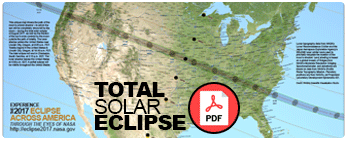Citizen Science
The 2017 solar eclipse presents many opportunities for amateur astronomers and lifelong learners to get in on the fun of doing science. This includes research projects about the sun, the moon, other sun-planet-moon systems, and even eclipses in other stellar systems. We also have opportunities for studying lunar features and solar activity, exploring the sun’s atmosphere, and investigating extrasolar planets.
NASA has collected a number of these citizen science programs. There are programs at every level from the most basic observations to publishable research opportunities in partnership with NASA and university scientists. So, join us and experience the excitement of learning, and making real discoveries! http://science.nasa.gov/citizenscientists/
If you want to participate in Citizen Science discussions and receive a newsletter devoted to CS activities across NASA, please join the list serve at https://lists.hq.nasa.gov/mailman/listinfo/nasa-solve
DownloadProjects related to the Eclipse
GLOBE Observer
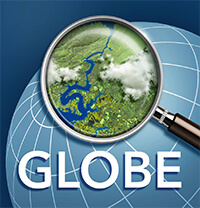
What happens in the atmosphere and on Earth’s surface when the Sun’s light is blocked, even temporarily? By collecting data during the eclipse, you can help us explore how the eclipse changes atmospheric conditions. You will also be contributing to a database used by students and scientists to study the effects of the eclipse on the atmosphere. Even if you are not on the path of totality, you can provide useful comparison data. General citizen scientists can observe clouds and air temperature with GLOBE Observer, while those interested in pursuing additional online training (especially formal and informal educators) are encouraged to check out other data collection and research ideas from the full GLOBE Program.
Program Link: https://www.globe.gov/web/eclipse/overviewObserver Link: https://observer.globe.gov/science-connections/eclipse2017
GLOBE Observer Eclipse Card: Download
HamSCI (Virginia Tech/New Jersey Institute of Technology)

This project will involve amateur radio operators in a program to study the ionosphere. The goals of this project are to advance scientific research and understanding through amateur radio activities, encourage the development of new technologies to support this research, and provide educational opportunities for the amateur community and the general public.
Link: http://www.hamsci.org/basic-project/2017-total-solar-eclipseCitizen CATE (National Solar Observatory)

The Citizen Continental-America Telescopic Eclipse (CATE) Experiment will use more than 60 identical telescopes equipped with digital cameras positioned from Oregon to South Carolina to image the solar corona. The project will then splice these images together to show the corona during a 90-minute period, revealing for the first time the plasma dynamics of the inner solar corona.
Link: http://eclipse2017.nso.edu/citizen-cate/The QuantumWeather Project
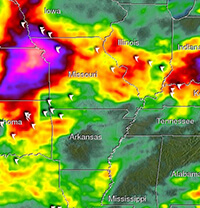
This project is participating in an NSF-EPSCOR sponsored project to measure surface and lower atmosphere changes during the eclipse. The 100 surface stations, 9 radiosondes and 3 UAS will be making measurements before, during and after the eclipse. This project is led by Dr. Robert Pasken at the Department of Earth and Atmospheric Sciences at Saint Louis University.
Link: https://www.slu.edu/arts-and-sciences/earth-atmospheric-sciences/research-centers/quantum-weather.phpLife Responds (California Academy of Sciences)
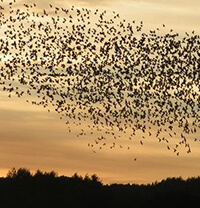
Many people have noticed changes in animal behavior, birds going to sleep, cats and dogs being confused, as a solar eclipse is in progress. In this opportunity for research, you will make scientifically-valuable observations of many aspects of this behavior. Join the California Academy of Sciences in conducting research into behavioral changes in plants and animals during a total solar eclipse.
Link: https://www.calacademy.org/citizen-science/solar-eclipse-2017EclipseMob VLF/LF Experiment

EclipseMob will leverage citizen science to create the first large, geographically distributed set of low-frequency (LF, 30-300 kHz) skywave propagation observations during the eclipse of August 21, 2017, which will be analyzed to provide new information about the location and geometry dependence of ionization and recombination behavior in the D and E layers of the ionosphere, while also stimulating public interest in science and engineering. EclipseMob is an NSF-sponsored collaboration between the University of Massachusetts and George Mason University with cooperation from SPAWAR and Georgia Tech.
Website: LinkProjects Related to the Moon, Sun and Earth
Aurorasaurus (NSF/NASA)
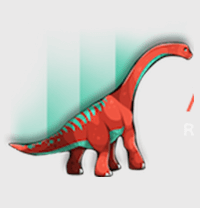
This project gathers real-time data about aurora sightings and sends out notifications to users when the Northern Lights are likely visible in their area. Registered users get location-based notifications, a real-time monitor of space weather activity, the capability to help verify tweets and search for real sightings, answers to science and aurora questions, and more.
Link: http://www.aurorasaurus.org/SunSpotter (Zooniverse)
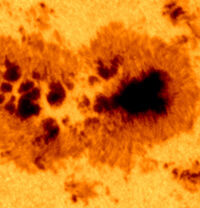
The Solar and Heliospheric Observatory (SOHO) needs your help to organize sunspot images in order of complexity to better understand and predict how the Sun's magnetic activity affects us on Earth. SunSpotter seeks to achieve a better physical understanding of how sunspot groups produce eruptions as well as to improve the accuracy of making predictions of solar eruptions. Like weather forecasting on Earth, we currently cannot predict eruptions with any accuracy. This will expand human knowledge about the Sun and allow us to more effectively protect humans in (and near) outer space.
Link: https://www.sunspotter.org/?_ga=1.210479381.1083796463.1456762282Sungrazer Project (U.S. Navy & NASA)

This is a NASA-funded program than enables the discovery and reporting of previously unknown comets in the SOHO and STEREO satellite instrument fields of view. Anyone, anywhere in the world can become a "Comet Hunter", and immediately begin looking for new comets in the spacecraft data. The Sungrazer Project then collects these reports, performs necessary measurements and data reduction, and ultimately turns the comet reports into officially designated comets.
Link: https://sungrazer.nrl.navy.mil/Solar Stormwatch II: Storm Front
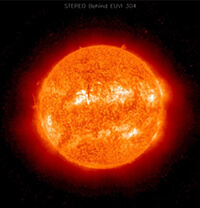
Solar Stormwatch uses data from the NASA STEREO mission to track eruptions of material from the solar atmosphere as they expand through the inner solar system. This material can produce severe space weather events hazardous to astronauts and satellites as well as to ground-based power systems that we rely upon. Help solar researchers improve their tracking techniques by tracing the outline of the storm in each image.
Link: https://www.zooniverse.org/projects/lepnoir/solar-stormwatch-iiGlobe at night (NOAO)

This is an international citizen-science campaign to raise public awareness of the impact of light pollution by inviting citizen-scientists to measure and submit their night sky brightness observations. In 2015, citizen scientists from around the world contributed 8,337 data points. Whether you use a smartphone, tablet or computer, you can submit your data in real time with the GLOBE at Night web app - now available in 28 languages!
Link: https://www.globeatnight.org/Image Detective (NASA)
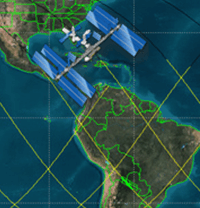
When not hard at work, ISS astronauts spend some of their free time trying their hand at photographing Earth’s magnificent scenery, both during daytime and at night. Over the years, a huge archive of such photographs has been accumulated. To make the archive useful for scientists and research, each image has to be ‘metatagged’ with information about what was photographed such as the specific city or geographic feature. Image Detective lets participants view photographs taken by ISS astronauts and work with a GIS system to identify what geographic spot is being photographed. Compete for the highest score and win a beautiful badge!
Link: https://eol.jsc.nasa.gov/BeyondThePhotography/ImageDetective/Moon Mappers (NASA)
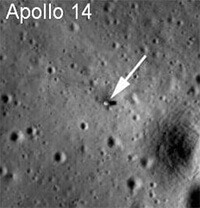
Over the years, the Lunar Reconnaissance Orbiter (LRO) has taken millions of images of the lunar surface at 2-meter resolution, revealing details never before seen by scientists. This program lets participants view these images and provide valuable information on what they see, so that scientists may search for them at a later time. Citizen Scientists around the world are needed to help LRO scientists interpret these stunning new images of the lunar surface. If you only spend five minutes on the site counting craters, you’ll be making a valuable contribution to science!
Link: https://cosmoquest.org/x/science/moon/Lunar Impact Monitoring (NASA)
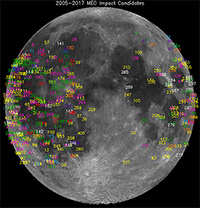
The lunar surface is pelted by thousands of meteorites every day. Look for flashes on the dark portion of the Moon to help NASA count new impacts. Use Earth-based observations of the dark portion of the Moon to establish the rates and sizes of large meteoroids (greater than 10s of grams or a few ounces in mass) striking the lunar surface. Why it is important? Lunar impact monitoring enables measurement of meteoroids in the 10s of grams to kilograms size range, which are difficult to measure with other techniques.
Link: https://www.nasa.gov/centers/marshall/news/lunar/index.html

